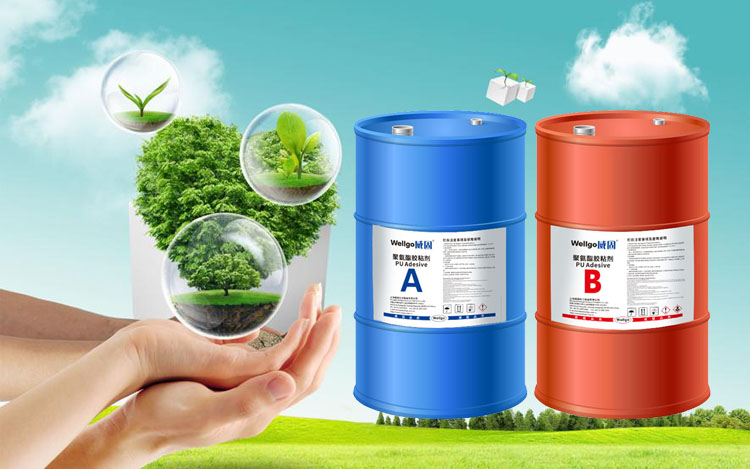Currently there are more than1,000 commercialized polymers. However, only a few materials, such as polyolefins, polyvinyl chloride, polystyrene, and polyester, hold a major market share in terms of volume. Among these materials, polyurethane (PU) has been the target of sustainability research. There are many driving factors behind research into sustainable polyurethanes and their subsequent commercialization.
1, There is a large demand in the terminal market
Through its various forms–rigidity; flexibility; paint, Adhesives, Sealants and Elastomers (CASE); and others. Polyurethanes are deeply entrenched in end markets. It is well known that the closer a material is to the end consumer market, the greater the interest in sustainability. Consumers’ environmental awareness affects their consumption patterns, which has accelerated manufacturers’ migration towards raw materials and processes that are considered more sustainable and environmentally friendly than alternatives.
2 , Strong growth in polyurethane
Polyurethanes account for about 6% to 6% of the $570 billion U.S. polymer market, according toChemBizR 8% market share. Although the production volume of polyurethane is relatively low compared to other polymers, its annual growth rate of approximately 7%, according to ChemBizR forecasts, makes polyurethane an attractive investment project and a sustainable one with the potential to be adopted by the entire industry. choose.
3 , Many approaches to sustainability
The basic precursor of polyurethane, known as polyols, can be recycled or produced from renewable resources. Methods to recycle polyurethane to obtain polyols and use them together with virgin polyols to make polyurethane are currently being commercialized. Polyols derived from renewable resources such as plants are also used on a large scale to make polyurethane foams and coatings in numerous products. The availability of both options therefore leads to a two-pronged strategy to achieve sustainability. Progress on isocyanates has been slow, but progress is expected to accelerate as research continues into the development of renewable anilines.
Sustainable polyurethanes have been commercially available for a decade. However, in the past few years, the pace of commercialization has accelerated significantly. Here the current status of sustainability will be analyzed at the supplier and customer levels.
4 PUSupplier
Global polyurethane suppliers are increasingly using bio-based or recycled raw materials. For example, Covestro is using polyester polyols based on succinic acid raw materials for thermoplastic polyurethane ( TPU ) and water-based polyurethane dispersions (synthetic leather applications). BASF is working towards circularity by recycling mattresses and producing recycled raw materials of a quality comparable to virgin resin. Its process breaks down flexible polyurethane to obtain polyols. Dow’s Renuva mattress recycling program converts discarded mattress foam back into virgin polyol through chemical recycling.
5 PUCustomer
Building and Construction: The main consumption of polyurethane in the construction industry is in rigid foam insulation. However, demand for bio-based polyurethane and other sustainable polyurethane products is primarily driven by coatings and adhesive applications. PPG offers bio-based architectural coatings based on adhesives developed by DSM. TheseThe grease is derived from bio-based polyurethane and acrylate.
Automotive: Ford claims to have used soy-based polyols in polyurethane foam seat cushions, seat backs and headrests. Volvo uses limited bio-based materials in its cars. It has experimented with using soy-based foam in car interiors, such as seats; however, its main focus has been on using recycled materials.
Footwear and Sports: Nike is reportedly using bio-based TPU developed by Lubrizol subsidiary Merquinsa in limited shoe soles. This bio-based TPU contains polyols derived from castor oil, blended with traditional petroleum-based polymers. Last year, Adidas launched its 100% recyclable performance running shoes. Every component is made from 100% recyclable TPU.
Home Appliances: Due to the precise performance specifications of home appliances, the adoption of bio-based materials has been rather slow. Turkish multinational household appliance manufacturerAreclik launched a “bio-refrigerator” in 2019 that uses bio-based polyurethane insulation.
6 , Conclusion
From customers to material suppliers, converters and original equipment manufacturers, multiple factors are driving demand for sustainable polyurethanes. However, performance requirements, relatively difficult processability, limited raw material supply, and high costs hinder demand conversion. To address these challenges, major polyurethane suppliers and several start-ups are developing bio-based or recycled polyurethane feedstock alternatives. With the rise of the sustainability movement, this trend is expected to further intensify in different application areas in the future.




 微信扫一扫打赏
微信扫一扫打赏
